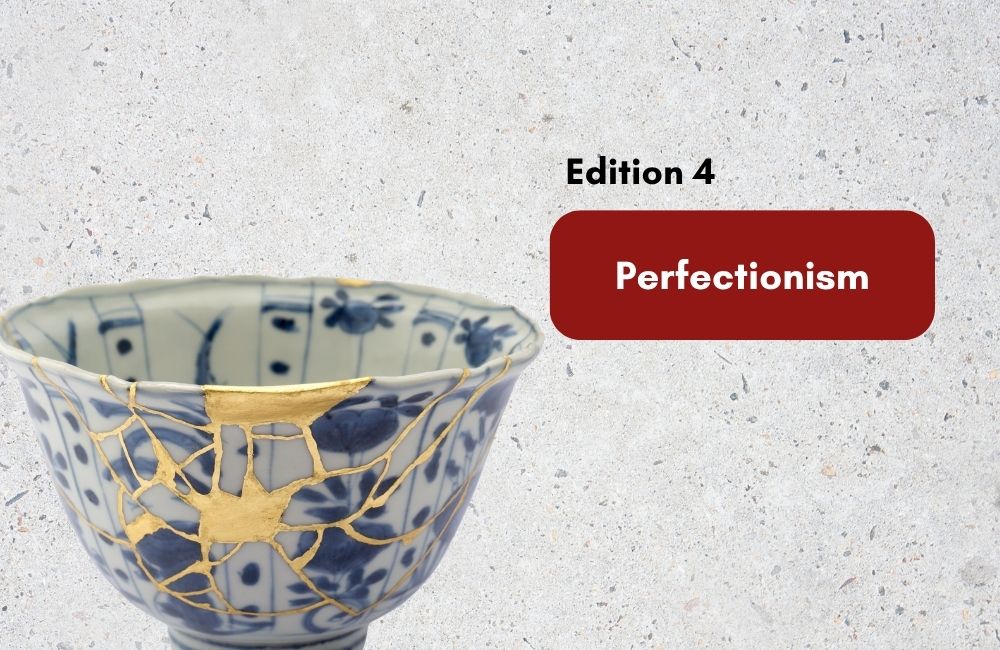
Welcome to edition 4 of Curiositea – our monthly newsletter; as always backed by evidence, short (3-5 mins to read) and something you can start implementing right away!
This time’s topic? Perfectionism.
Read through what one of us had to say and see if it resonates:
“I often can’t get on with my day till my bed is creaseless and the sheets folded as tight as origami boxes. How does this show up at work? Oh so many ways.
I don’t start on projects because I’m worried about getting things perfectly right. I delay deliverables because the images in the deck don’t convey the metaphorical nuance I had imagined (someone said AI would make this easier…but then I spent 3 hours researching the best AI for my work).
I prefer to work alone because other people’s work never measures up to my standards. Yup… Not great for a team.”
Sounds familiar?
Whether you have self-oriented perfectionism, other oriented perfectionism or socially prescribed perfectionism, the impact is manifold. It leads to reduced productivity, dissatisfaction, anxiety, avoidance and negative impact on relationships.
What can we do to tackle perfectionism?
So much….ranging from setting realistic standards to focusing on the big picture and more. Just for today though, the journey we really want you to engage with is the imperfections that make art.
An exhibition from the University of Michigan, Less Than Perfect, invites us to reflect on our encounters with imperfection and failure….and learn from them.
They have three fascinating themes:
Failed Perfection ‘studies objects that failed in production and uses them to study ancient economy and technologies’
Deliberate Imperfection ‘features finely crafted objects whose makers purposely introduced asymmetries or other unexpected elements into their products – and considers why we choose to make imperfect things.’
Repairing Perfection ‘highlights artefacts that were repaired and asks why and how individuals chose to restore usefulness and beauty to certain damaged or worn out objects’
We loved the idea of these themes and were inspired to put together a set of art-based prompts that can help us work through unhelpful perfectionism in our own lives.
You could do these on your own or get your team together to do them in a meeting – as always, please do write back and tell us what your experience of them was.
Ten art based prompts to work through perfectionism
1. Doodle something that represents a mistake you made at work when you were younger. Draw a medal rosette around it.
- What would your younger self tell you? What would you say to your younger self?
2. The next time you’re preparing for something you’d normally agonise over, decide to offer yourself the creative constraint of time and only do as much towards it as the chosen time window allows. Give your creative experiment a title (eg “Good enough”).
- How did it feel to stop when the time ran out? What did you observe about yourself and the outcome?
3. Make a blind sketch of a colleague. Take a sketch pen, choose a colleague to sit before you. Draw them without ever looking down at the paper. Let your pen move.
- What does not looking down at what you’re making allow you to do in the moment?
4. Think of one failure you’ve had in your life (however you choose to define that). Create a three-panel artwork: one showing “before,” one showing the turning point, and one showing “after”.
- What perspective did you gain about that incident?
5. Draw or assemble something that represents something broken (or less than perfect) in your life. Then “repair” it artistically (gold thread? stitches? Painting around it?) à la kintsugi (the Japanese art of mending broken pottery with gold).
- How does it feel to reframe brokenness as beauty and not shame?
6. Draw a backpack and fill it with representations of what you’re carrying emotionally when you’re trying to make something perfect – responsibilities, fears, hopes. Label each item if you like.
- How does your need for perfect weigh you down? What can you let go of?
7. Write or draw a “letter” to your inner critic who pushes for perfection. Tell that part of you how you experience the pressure to be perfect. Add visual elements like colors, borders, or symbols to bring it alive.
- What would you gain if you were to relax about being perfect?
8. Choose a metaphor that reflects the role perfection plays in your life (a storm, a maze, a tightrope, a blooming garden…). Illustrate it in any form—abstract, literal, symbolic. Then choose another metaphor for how you would like it to be and do another illustration.
- What does your choice of metaphors tell you about your need for perfection?
9. Make a small piece of imperfect art – maybe a doodle, a note, or a quirky message – and leave it somewhere public: on a bench, in a book, taped to a wall.
- How did it feel to allow yourself to be imperfect? Were the consequences what you imagined?
10. Start with a deliberate “mistake”- a coffee stain, a random splash of watercolor, a ripped paper- and then build a piece of artwork around it.
- How does it feel to see mistakes as opportunities, not catastrophes?
We can’t wait to get strated on this (see what I did there? ☺). Have loads of fun.